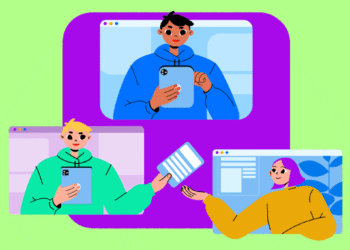
You can ask your AI tool what it needs to know about you.
You can create a custom GPT in under 30 minutes – one that adopts your style and prose, even your personality.
PR pros are already using AI tools to cut down on repetitive tasks, but they can take it a step further, said Lisa Peyton, assistant professor at the University of Oregon’s School of Journalism and Communication.
To do this, think of building a custom GPT as a recipe, she said.
“I know what I want to put on the table. I know exactly what it is I want to cook. Now I have to go out and find all of the ingredients to make sure that I can bring this end-product to life,” she said.
A custom GPT can be useful to help you craft emails, social posts, newsletters or any piece of content in your style of writing and voice, Peyton said. You can also use it to brainstorm and research. Once you have it set up, you can cut down on hours of work, she added.
Two of the most popular tools Peyton uses to “get the recipe right” are Claude and ChatGPT.
“I use Claude more as a strategic partner, and I use ChatGPT as more of a doer,” she said.
You don’t have to be an AI pro to accomplish a custom GPT either, she said. It’s simple and will significantly improve your workflow.
Here’s Peyton’s list of ingredients.
- Ask your AI tool for guidance: Peyton said it may feel unfamiliar to try to build an AI agent that mirrors your personality or voice and you may not know where to start. But you can ask your AI tool for help, she said. Peyton likes to ask Claude what it needs to know about her or her business in order to help build a personalized GPT. “What I say is, ‘Hey, Claude, I need to create a custom GPT that’s going to sound like me. Ask me any questions to help you produce the very best set of instructions for my custom GPT.’ Literally, that’s it. Claude comes back, asks me the five key questions.” This method works brilliantly, Peyton said. “It’s like my pro hack. You don’t have to write these yourself. It saves so much time and (the prompts) are so much better than anything you could ever write yourself. So, I’ll get a beautiful set of instructions.”
- Provide context: Once you have your instructions, give your GPT something to work with that is in your voice. “Part of the ingredient mix is going to be providing context,” Peyton said. Having a library of documents with your voice and North Star is critical to building this. Use these documents, social posts or other pieces of content so that your GPT understands how you write. This is especially important to sound genuine, she said.
- Be as specific as possible: Instead of thinking in general terms, think about very specific tasks and goals for your custom GPT. “The more specific we can get for each task, the more detailed those system instructions can be, the more likely it is it’s going to do an amazing job,” Peyton said. “That’s another piece of this recipe.” Continually modify your custom GPT with greater specificity when possible. Update information. Continue to provide context.
- Constantly fact check your GPT’s output: No matter how amazing and useful AI tools can be, they’re not going to get it right 100% of the time. You can build a fact checker into your GPT, Peyton said. This will still require some manual editing, but it will be able to tell you what information can and cannot be verified. “The fact checker that I built, it shows you exactly every single stat, every single claim. It gives you a verification score,” she said. “It tells you the source. It tells you what can’t be verified. And then it’ll just give you a whole set of recommendations of how to update the copy to make sure that it is 100% accurate.” From there, you need to think about where the GPT-produced will be seen. Is it a blog post or an academic journal? You’ll want to make sure that you’re editing for the audience and editing manually.
Moving forward, Peyton encourages PR pros to be flexible and learn to adapt when it comes to custom GPTs.
“I think we need to be really open-minded and try to think outside of the box when we think about creating these agents, because they are becoming more and more powerful,” she said.
Join Peyton and others for Ragan’s Communication Boot Camp Virtual Conference on Sept. 18 from 11 a.m. to 3:30 p.m. ET.
Courtney Blackann is a communications reporter. Connect with her on LinkedIn or email her at courtneyb@ragan.com.
The post A recipe for a custom GPT in under 30 minutes that will cut your workload appeared first on PR Daily.













